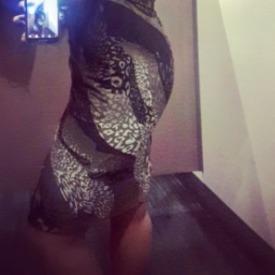Question for runners???

angeljan1904
Posts: 9 Member
I just started on my journey about 2 months ago. I started at 242 and am Now down 20 lbs. My question is, is it normal for my shins to hurt midway through my run (probably more like a jog)? I am only up to about 2.5 miles, and I don't run straight through. I walk a little and try to jog for a longer distance, but very slowly. My shins hurt during, and for a few hours afterwards. From what I understand, if it was shin splints it would last several days or weeks, so I'm pretty sure that's not the case. Any ideas or suggestions would be appreciated.
0
Replies
-
I started running at 200 pounds (Couch-to-5K) and had shin splints badly in the beginning. Two things I adjusted:
1.) Getting fitted for proper running shoes at a professional running store that measured my foot, arch, width and looked at my foot position while running in the store.
2.) A heart rate monitor to keep my breathing in check. I realized I w \as trying to go too fast which also affected my shins so once I knew what my target heart rate should be and slowed my pace down, I no longer got shin splints.
Hope this helps!0 -
I'd suggest researching proper running form too. I'm not sure if it's true but I've read that landing on the center of your foot is best, and doing that I've never had any knee pain, even with a bit of a bum knee.0
-
I just started on my journey about 2 months ago. I started at 242 and am Now down 20 lbs. My question is, is it normal for my shins to hurt midway through my run (probably more like a jog)? I am only up to about 2.5 miles, and I don't run straight through. I walk a little and try to jog for a longer distance, but very slowly. My shins hurt during, and for a few hours afterwards. From what I understand, if it was shin splints it would last several days or weeks, so I'm pretty sure that's not the case. Any ideas or suggestions would be appreciated.
Good for you for tying on the laces. You are a runner if you move at a pace where having a conversation is difficult. You are a smart runner when you walk to avoid injury. You are a heavy runner so take those walk breaks. I too am running heavy but I am walking more to avoid injury. I use jeffgalloway.com his web site is really helpful. I also do deep water running you will find a video on youtube . Have fun and give your body and legs the time it needs to recover.
Patsy
Lutz fl0 -
It is shin splints. Get fitted properly for shoes and it will likely go away.
The Galloway method will help too.0 -
Sounds like shin splints to me. Mine stopped once I got properly fitted for new shoes at an actual running store. I also try not to land so heavily on my heels and that helps too.
Good luck!0 -
Could be shin splints, but then could be you are just running. Shin splints will hurt so bad even walking will be a struggle. I should know.... but I ran mine out. It's not shoes or the way I land is the problem for mine...it's doing more than my body can handle.
Ice.... and keep running. Like I said. I ran mine out. I ran on grass till they went....took about 2 weeks or so, but then it ever came back.0 -
My shins hurt during, and for a few hours afterwards
How would yo describe the pain? Is it an ache, or a sharp pain? How is it when you walk otherwise?
There are a number of potential lower leg problems it could be, but if it is shin splints then I'd caution against running through as that's the one that can cause permanent damage.
The treatments include shoe fitting as mentioned, strengthening exercises for the shin muscle and running form but it would help to clarify the symptom first.0 -
Not enough water, crappy shoes or REALLY bad running form. I'm sure it's either the water or shoes0
-
Definitely check your form and your shoes. I used to have chronic shin splints but I got new shoes and I am always readjusting my form and it rarely happens. Also, maybe check into exercises to help strengthen your shin area? I read that may have something to do with it, too.0
-
It is shin splints. Get fitted properly for shoes and it will likely go away.
The Galloway method will help too.
^This.
Congratulations on becoming a runner! Take care of your body by getting fitted for shoes along with a gait analysis and take your time getting 'running fit'. 0
0 -
I teach beginners running and many new runners suffer with their shins. You just need to allow your body to get used to it. Good comfortable supportive shoes will help, as will stretching and ice. Just take it easy and it will get better.
Well done on starting running- it is amazing I love it :-)0 -
Awesome job getting out and running!
If your shins are bothering you, it could be shin splints, it could just be the muscles in your legs still adapting to the stress you are putting them under.
After you run, ice your shins, even if they don't hurt. If you find you need an anti-inflammatory, take it after you run, not before-- the pain you feel will keep you from over doing it if you listen to it.
Some stretches and strengthening exercises you can do-- alternate walking on your heels and walking on your toes. Do that a few times a day. Also, sit or stand and "write" the alphabet in the air with your toes. This will help your lower leg muscles. There are some other things I have read, but those two have worked for me.
Look up Jeff Galloway and read up on his run-walk-run method for distance running. I started out training for a half marathon in January trying to run straight through. By February I was sidelined with shin splints. Did those exercises I mentioned and layed off the running until March. Discovered run-walk-run and did my race last weekend without any other major issues. At first, in my head I wasn't a "real" runner because I took walk breaks.... Don't let get in your head-- you run, you are a runner.
Getting the proper shoes are going to help you as well. I find I can run in neutral and stability with no issues. Just make sure you go to an actual running store or somewhere like roadrunnersports.com. I went into a foot locker just to check out the new colors on some shoes I was looking at and ended up talking with one of the kids working there... he really tried, and wanted to be helpful but it was clear that he was not totally up on everything a runner needs to consider.
Again, great job getting into running, you won't regret it! Take rest and breaks when you need to and make friends with your ice packs!0 -
The Galloway method will help too.
Its worth highlighting that if the problem is shin splints then using Galloway method only addresses the symptom, not the underlying problem and potentially exacerbates it as a result.0 -
Down the sides of the front of my leg is my like an ache from the muscles, but straight down the front is like constant needles. I alternate walking and jogging, and I thought I had good shoes. They are not very cushioning so sometimes I adjust the way I run to make up for it.. After it begins to hurt I start walking , as long as I don't stop walking (not even for my dog to take a 15 second pee break) it's not too bad. But if I do stop it takes another 20-30 seconds to numb back out.0
-
I just had this problem. I recommend finding a good foot doctor and seeing if you need arch supports. I have flat feet, and as soon as I got my supports, the shin splints went away within the week. Also, go Asics or Brooks for running shoes, they're the best built for those of us with shin splints.0
-
I just had this problem. I recommend finding a good foot doctor and seeing if you need arch supports. I have flat feet, and as soon as I got my supports, the shin splints went away within the week. Also, go Asics or Brooks for running shoes, they're the best built for those of us with shin splints.0
-
Stretching before running is key. You need to make sure you don't try and power through those shin splints because they can turn into stress fractures. That happened to me and it really sucked.0
-
The Galloway method will help too.
Its worth highlighting that if the problem is shin splints then using Galloway method only addresses the symptom, not the underlying problem and potentially exacerbates it as a result.
I'm just curious, since I used this method to train for, and run, my half a week ago with no additional problems how it exacerbates shin splints? I have had no further issues with them since I took the month off and intend to continue training in this fashion but my preference is to continue avoiding shin issues...0 -
Down the sides of the front of my leg is my like an ache from the muscles, but straight down the front is like constant needles.
OK, the ache is probably just muscle acclimatisation to the change in loading. I generally find that when I increase my mileage I do get some aching, but that passes. The needles does sound a little like mild shin splints, when I suffer from them it's like someone sticks a knife into my shins and wiggles it around, although that affects me when I try to walk. That said, describing it as numbing out might point to something else.
I'd suggest speaking to a physio or doctor and getting some advice. I couldn't say for sure whether what you're describing is shin splints or not, so it's worth having someone give it a bit of a prod....and I thought I had good shoes. They are not very cushioning so sometimes I adjust the way I run to make up for it..
If it is shin splints there are three main approaches to treating the cause:
The type, fit and age of the shoes. People tend to be be either over-pronators, neutral or supinators, which describes how the foot lands and rolls as you hit the ground. Shin splints is more common in over-pronators, but can happen to others. I would suggest getting fitted for shoes at a decent running store where they spend time analysing your gait and identifying the right shoe for you. Many good shops offer a replacement policy allowing you to return the shoes for a period after buying them if they don't suit. It may be that your shoes are the wrong type, or they're a poor fit for running.
The other shoe related issue is life, most running shoes have a life of somewhere between 300 and 500 miles. Lower end for heavier runners, as it's a question of the support and cushioning being battered by use.
The next treatment is to focus on your form, and the fact that you're compensating for lack of padding suggests that might be contributing to the issue. Many new runners try to reach their leading leg out in front, and land in the traditional heel to toe roll. That approach can lead to excessive rotational loads on the lower legs, exacerbating any issues as a result of muscle balance or shoe condition. Try to focus on taking a short pace, and landing the leading foot only just in front of your main body mass. Aim for a quick turnover, to encourage that shorter pace. Essentially you're landing on your midfoot rather than the heel. Forefoot running can also help, but that can bring other issues, particularly as a new runner it becomes probably more than is worth thinking about.
Finally one contributor to shin splints is a muscle imbalance between the shin muscle and he calf. This is helped by lifting a sandbag or against a resistance band with your toes, walking on your heels with your toes pulled up or pedalling a bike with your feet clipped to the pedals so that you pull up as well as push down. Strengthening the shin muscle helps you develop control over the foot action as it lands and you roll forward and then push off.
Stretching or foam rolling after you run helps condition the muscles, although personally I prefer not to before I run, stretching cold muscles can cause other issues and dynamic stretches are probably more than you'd benefit from right now.
I hope some of that helps, but I'd reiterate my comment about getting some medical advice, as what you're describing may not be shin splints. Notwithstanding hat there is no harm in trying all of those things anyway.0 -
The Galloway method will help too.
Its worth highlighting that if the problem is shin splints then using Galloway method only addresses the symptom, not the underlying problem and potentially exacerbates it as a result.
I'm just curious, since I used this method to train for, and run, my half a week ago with no additional problems how it exacerbates shin splints? I have had no further issues with them since I took the month off and intend to continue training in this fashion but my preference is to continue avoiding shin issues...
You'll note that my comment was in response to the fairly uncritical you have shin splints, try Galloway post upthread. From the description at that point, and even with the clarification, it's not clear whether the problem is shin splints or not. Even if it was Galloway, per se, isn't treating the causes of the pain, it alleviates the pain by periodising the loads, and easing the stress for a short period. That short period isn't really enough to actually recover from the micro-fractures that are causing the pain.
The treatments for shin splints are several, you've identified several in your post above, and as you point out you've used these in parallel with Galloway with some success. Would you have completed at a faster pace had you just run the whole thing? No way to know unless you now train for a continuous run approach. As a method Galloway has merits, but in isolation it's not going to deal with shin splints. If the originator is suffering shin splints and tries Galloway she's essentially just trying to run through the problem. Doing that risks exacerbating the problem. Having been in a situation myself where shin splints left me in enough pain that I had to use sticks to walk, I wouldn't advocate anyone try to run through the condition.
I'd note that some of the exercises that you suggest are actually aimed at plantar fasciitis rather than shin splints, but regardless they're worth doing for a new runner as they'll help avoid PF as well.0 -
I appreciate everyone's advice. I will definitely be going this week to get properly fitted for shoes. I don't usually ever stretch before or after. I have usually just warmed up and cooled down(start slow and end slow).so I will begin stretching also. I will also look into strengthening exercises for my shins. Not sure what foam rollers are, but I will look into it. Thank you again.0
-
in addition to what others have mentioned about proper shoes for your gair and checking your form, you might also want to look into getting compression sleeves for your lower legs. when you first start running you'll start to feel muscles in your lower legs (and feet) you knew you had :laugh: i found the compression sleeves post runs really helped with healing the first month or so after i got back to running0
-
The Galloway method will help too.
Its worth highlighting that if the problem is shin splints then using Galloway method only addresses the symptom, not the underlying problem and potentially exacerbates it as a result.
I'm just curious, since I used this method to train for, and run, my half a week ago with no additional problems how it exacerbates shin splints? I have had no further issues with them since I took the month off and intend to continue training in this fashion but my preference is to continue avoiding shin issues...
You'll note that my comment was in response to the fairly uncritical you have shin splints, try Galloway post upthread. From the description at that point, and even with the clarification, it's not clear whether the problem is shin splints or not. Even if it was Galloway, per se, isn't treating the causes of the pain, it alleviates the pain by periodising the loads, and easing the stress for a short period. That short period isn't really enough to actually recover from the micro-fractures that are causing the pain.
The treatments for shin splints are several, you've identified several in your post above, and as you point out you've used these in parallel with Galloway with some success. Would you have completed at a faster pace had you just run the whole thing? No way to know unless you now train for a continuous run approach. As a method Galloway has merits, but in isolation it's not going to deal with shin splints. If the originator is suffering shin splints and tries Galloway she's essentially just trying to run through the problem. Doing that risks exacerbating the problem. Having been in a situation myself where shin splints left me in enough pain that I had to use sticks to walk, I wouldn't advocate anyone try to run through the condition.
I'd note that some of the exercises that you suggest are actually aimed at plantar fasciitis rather than shin splints, but regardless they're worth doing for a new runner as they'll help avoid PF as well.
I think we agree more than we disagree. The exercises and the run - walk method came at the suggestion of a physical therapist but that's besides the point.
I know some people have had luck running through the shin splints-- to me that sounds like a bad idea unless one is interested in progressing to stress fractures. Why I also suggested rest.
I think breaking up her runs, which the OP is already doing, will serve to decrease the overall running load she is experiencing and, if it is not shin splints, let her muscles get used to what she is asking them to do... which if it's just been 2 months, everything is still new.
Would I have been faster straight running? I doubt it. My time was 23 minutes faster than my goal was to begin with. My fastest mile pace ever is about 7:00 straight running. I'm at about 8:15 now with the run breaks. Unfortunately, I may be rapidly approaching my body's personal limit. Which is a giant bummer.
ETA: don't feel like you need to qualify your runs. "I only do 2.5 miles though. I take walk breaks..." it sounds like you have done awesome in the last two months!:flowerforyou:0 -
One more quick thought, and this is just from my experience as a new runner (last year). I found that the surface I run on makes a difference. I got that "needles in the shin" thing after every time I ran on sidewalks. Switching to asphalt (where it's safe) minimized it or took it away completely. Additionally, I got a good pair of properly fitted Asics and paid attention to form. All of it helped.0
-
OP- I'm not savvy enough to link to another post. Do a search for "so you want to be a runner." Go to page one and read what ThickMcRunFast posted as the thread starter.0
This discussion has been closed.
Categories
- All Categories
- 1.4M Health, Wellness and Goals
- 398.2K Introduce Yourself
- 44.7K Getting Started
- 261K Health and Weight Loss
- 176.4K Food and Nutrition
- 47.7K Recipes
- 233K Fitness and Exercise
- 462 Sleep, Mindfulness and Overall Wellness
- 6.5K Goal: Maintaining Weight
- 8.7K Goal: Gaining Weight and Body Building
- 153.5K Motivation and Support
- 8.4K Challenges
- 1.4K Debate Club
- 96.5K Chit-Chat
- 2.6K Fun and Games
- 4.8K MyFitnessPal Information
- 12 News and Announcements
- 21 MyFitnessPal Academy
- 1.6K Feature Suggestions and Ideas
- 3.2K MyFitnessPal Tech Support Questions















